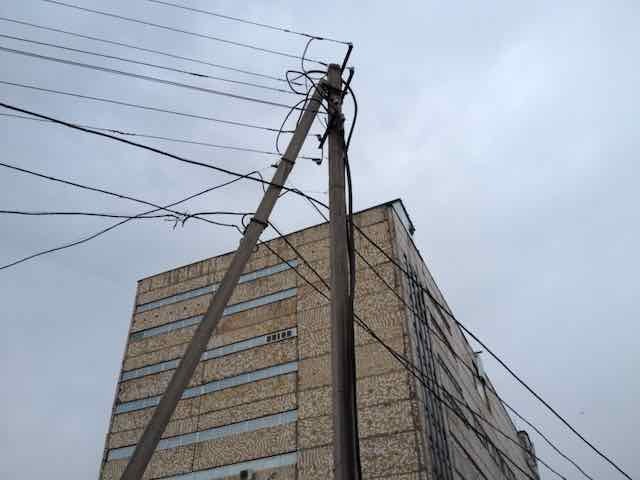I first visited Kyrgyzstan in 2012, twenty-one years after the country declared independence after the fall of the Soviet Union. It was my first experience of a former Soviet state, although I had visited Chzekoslovakia and the former East Germany in the early 90's, that were both part of the Eastern Bloc until 1989.
Arriving in the capital Bishkek after overnight flights from London and Istanbul I felt like I had landed in an unknown kingdom nestled high amongst the mountains of Central Asia. It was like a parallel world that I was suddenly privy to. I knew I was somewhere very remote when, from the cracked windscreen of the taxi, about half way between the airport and the city, I saw this incredible overhead road sign that gave directions to three different capitals of former Soviet states - Bishkek, Almaty and Tashkent. I was on the Silk Road.
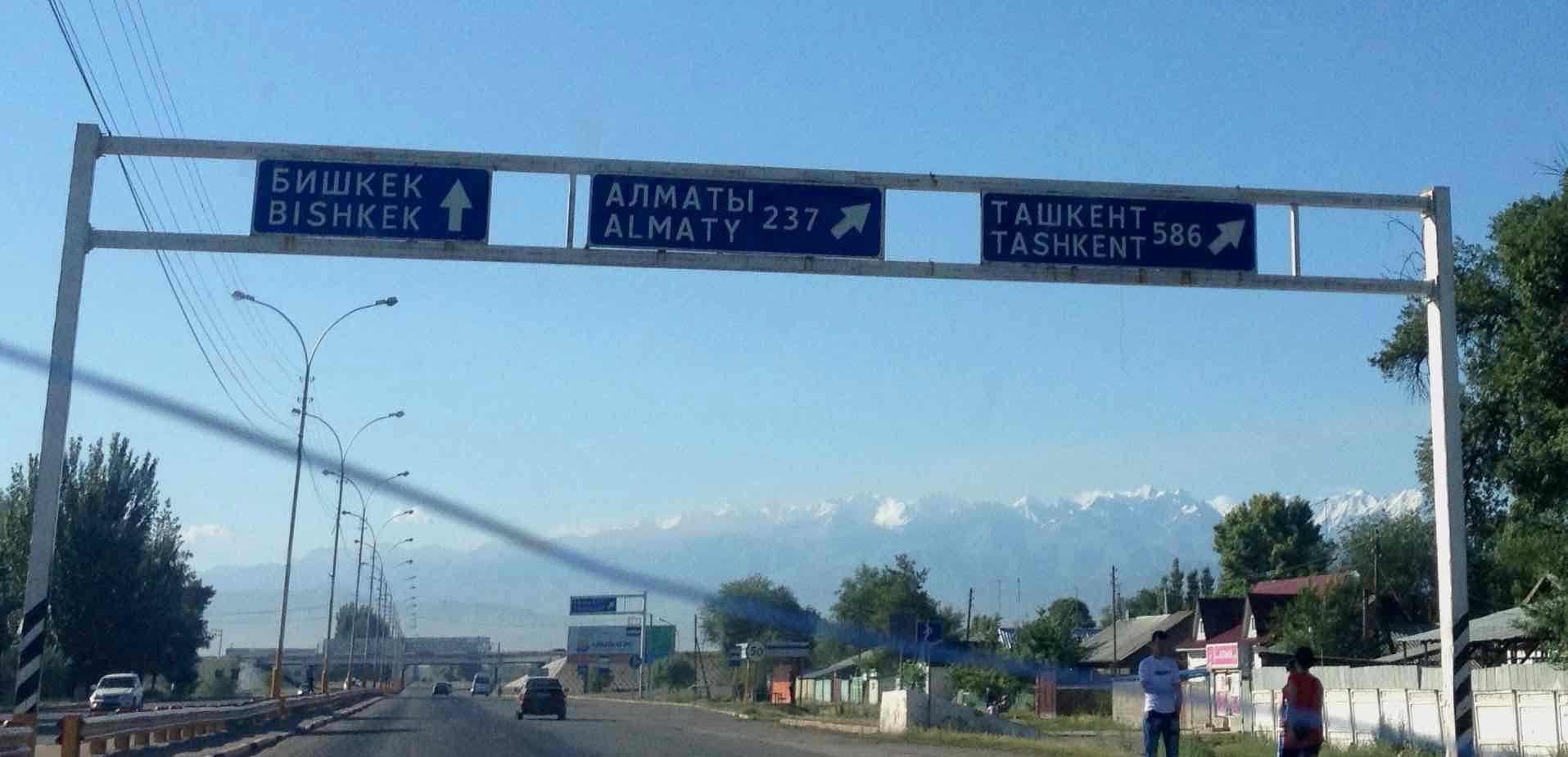
The state architecture and plazas etc in the centre of the capital had a slight islamic feel to them but the suburbs, especially the Micro Districts, were very Soviet. The roads were full of pot holes and it felt like the city was quite dilapidated, and down on its luck. It was not quite as if it had been in a war but its infrastructure felt like it had, had the plug pulled from it, so to speak, which is more or less what had happened when the Soviet Union collapsed and suddenly Kirghiza was on its own. It was definitely in a state of de-development and was probably well on its way to becoming a third, rather second, world country at that point. The country was broke, and the soviet era infrastructure, after two decades of little, to no, maintenance, was creaking. The planned Soviet wide economy, in which Kyrgyzstan was integrated, collapsed overnight, distant markets and supply chains disappeared, factories closed and the economy collapsed.
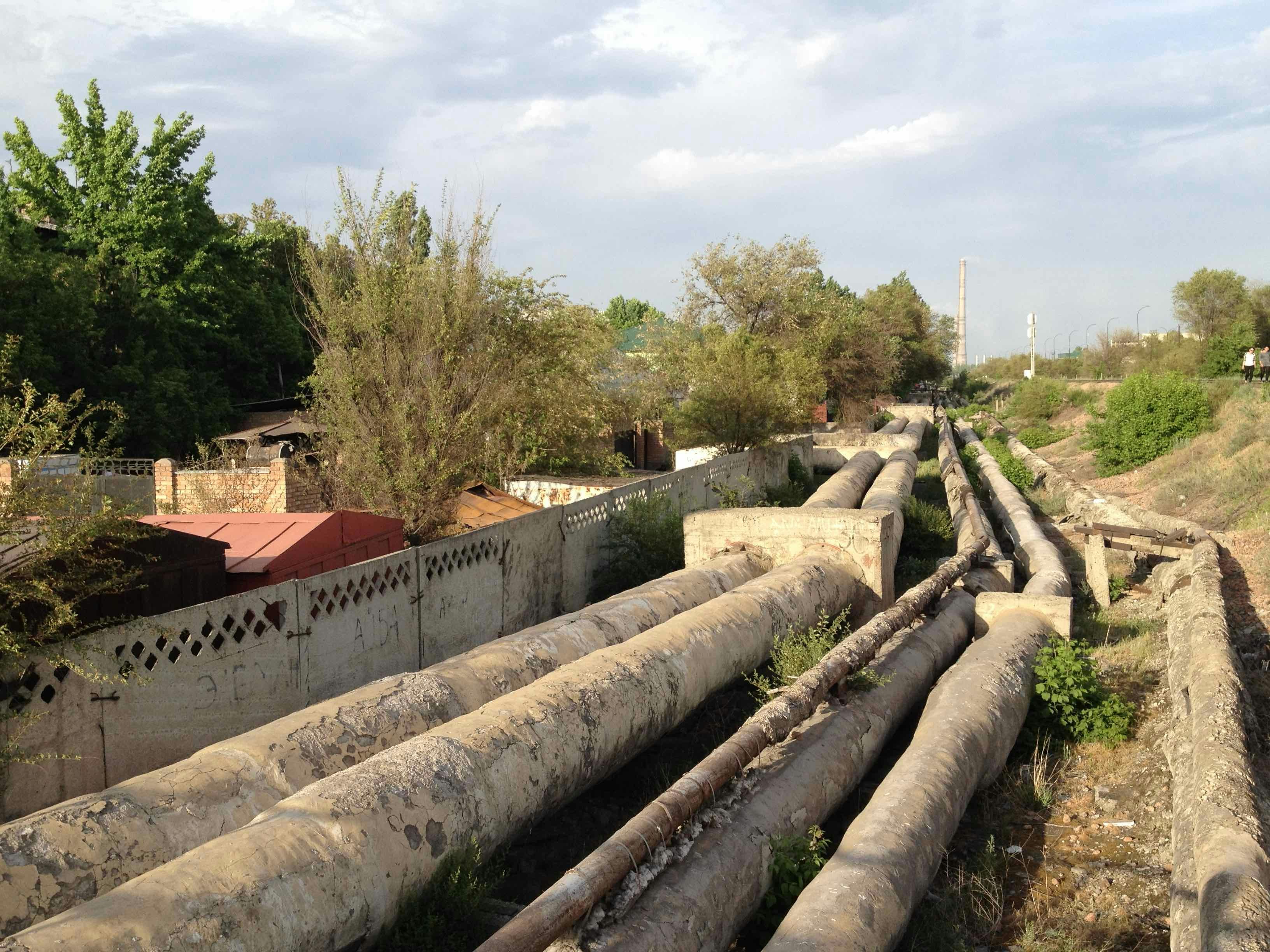
I was fascinated by the huge above ground heating pipes of the centralised district heating system that oozed steam and sprawled across the city like the tentacles of a giant mutant octopus. The cars were a mix of Ladas and second hand imports that were driven over from Germany and sold in huge outdoor car markets. Many of these imported cars were big salons past their prime that bullied their way through the streets of the capital giving me the sense that they were gangsters, and which only added to the underlying feeling of unease, almost lawlessness, that I imagined to lie just below the surface. This rugged underbelly was at odds to the Ladas, that were demure in comparison, and especially so compared to photographs and videos of Bishkek during its Soviet-era prime, when it was called Frunze, with beautiful boulevards, smart policemen directing orderly traffic along perfect looking roads.
I later learned that Frunze, as the capital of the Kirghiz Soviet Socialist Republic (Kirghiz SSR) was built with beautiful parks, fun fairs, museums, opera house, theatres and cinemas etc to attract administrators and the political class from Moscow to this remote corner of the Soviet empire. According to the final Soviet census of 1989, Kirghizia had a population of over 4.25 million people, the majority of which were ethnic Kyrgyz, but 22% of the population of Bishkek were Russian. Ten years later, that number had decreased to around half, with many returning to Russia. This exodus added to the sense I had during my early visits to Kyrgyzstan that Bishkek was being taken back by the Kyrgyz, I felt this particularly in Bishkek where Russian rather than Kyrgyz is the main language spoken, compared to the rural areas where Kyrgyz often predominates. In my imagination it was if Bishkek was an occupied city, not by a foreign army but by Kyrgyz citizens who were claiming the former Soviet state capital as being once again theirs.
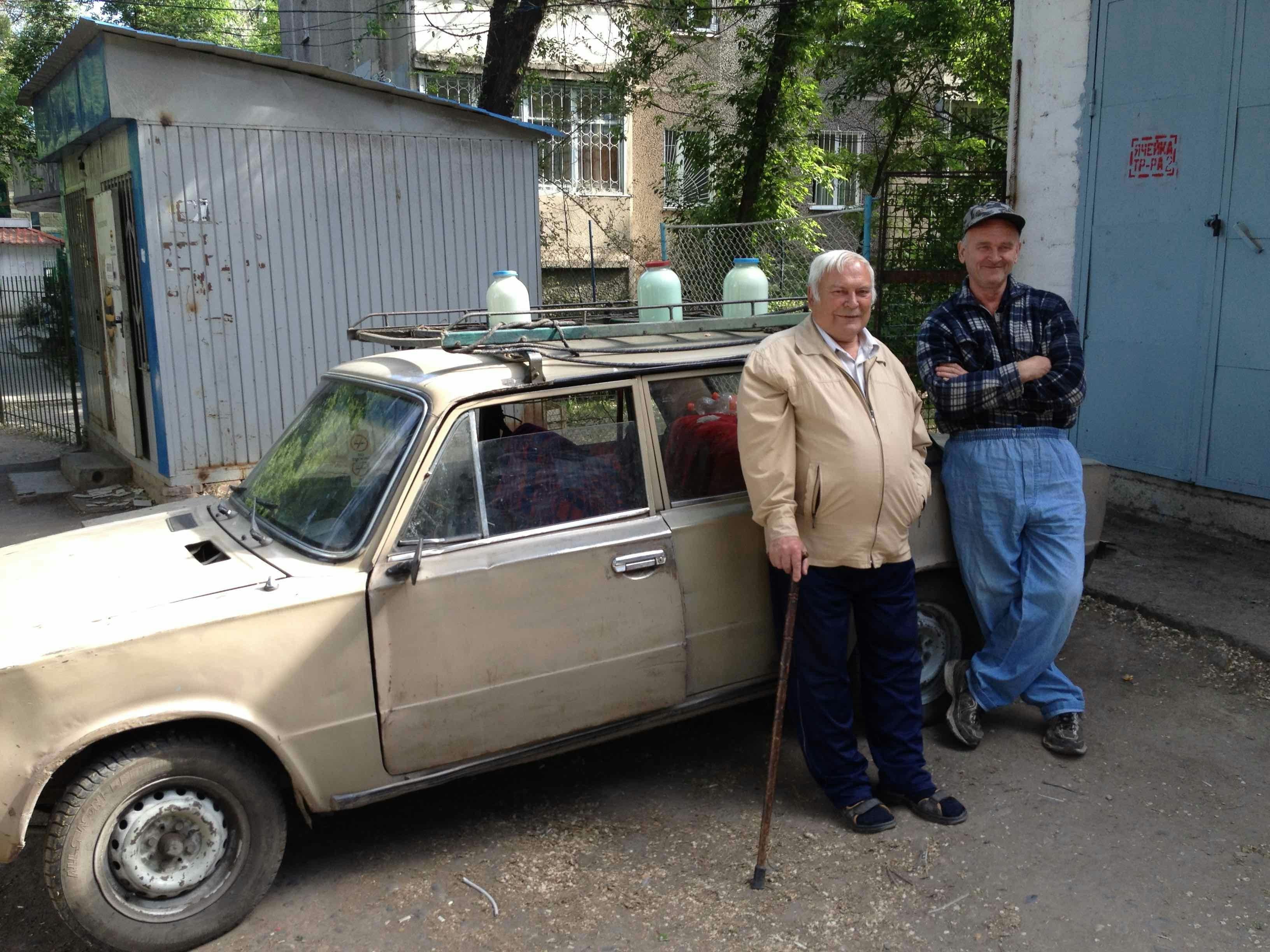
Not everyone left though. I met these two gentleman selling milk from their Lada within the first few days of being in Bishkek and realised that many of the remaining Russians were struggling to make ends meet and were perhaps not having the retirements that they imagined back in the hey day of the empire. As fortune would have it, six months later, in early 2013, I met the man below who was also selling milk. I showed him the photo of the other two men, one of which was his brother!
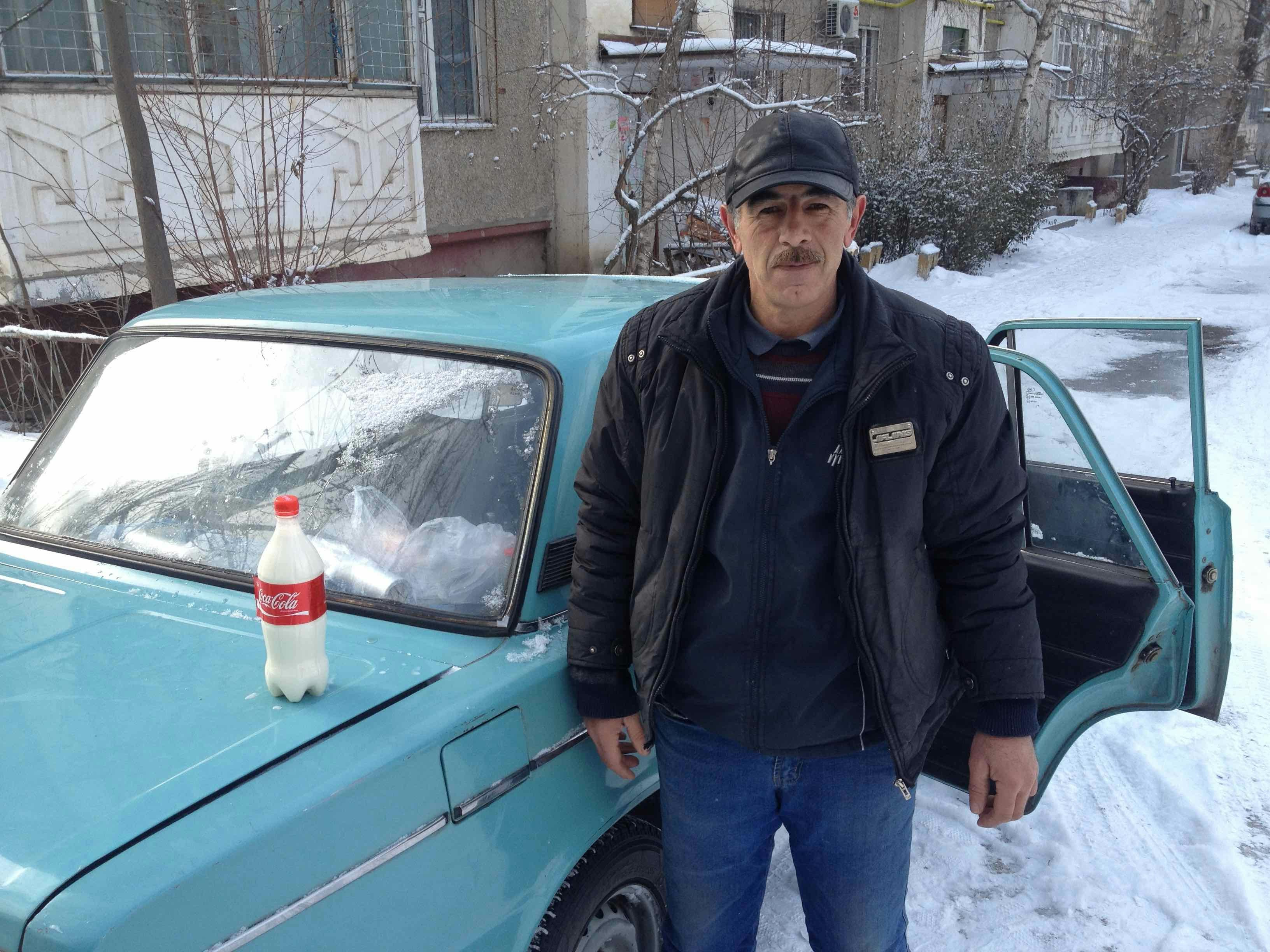
Many were selling produce on the streets or second hand goods such as the gentleman in the fur hat below, who I met in early 2013, selling knives on the pavement next to main road. I'm not sure if he was Russian but according to Wikipedia, over 600,000 residents of the North Caucasus region were deported to the Kirghiz and Kazakh SSRs, in 1944 alone, so perhaps he descended from them?
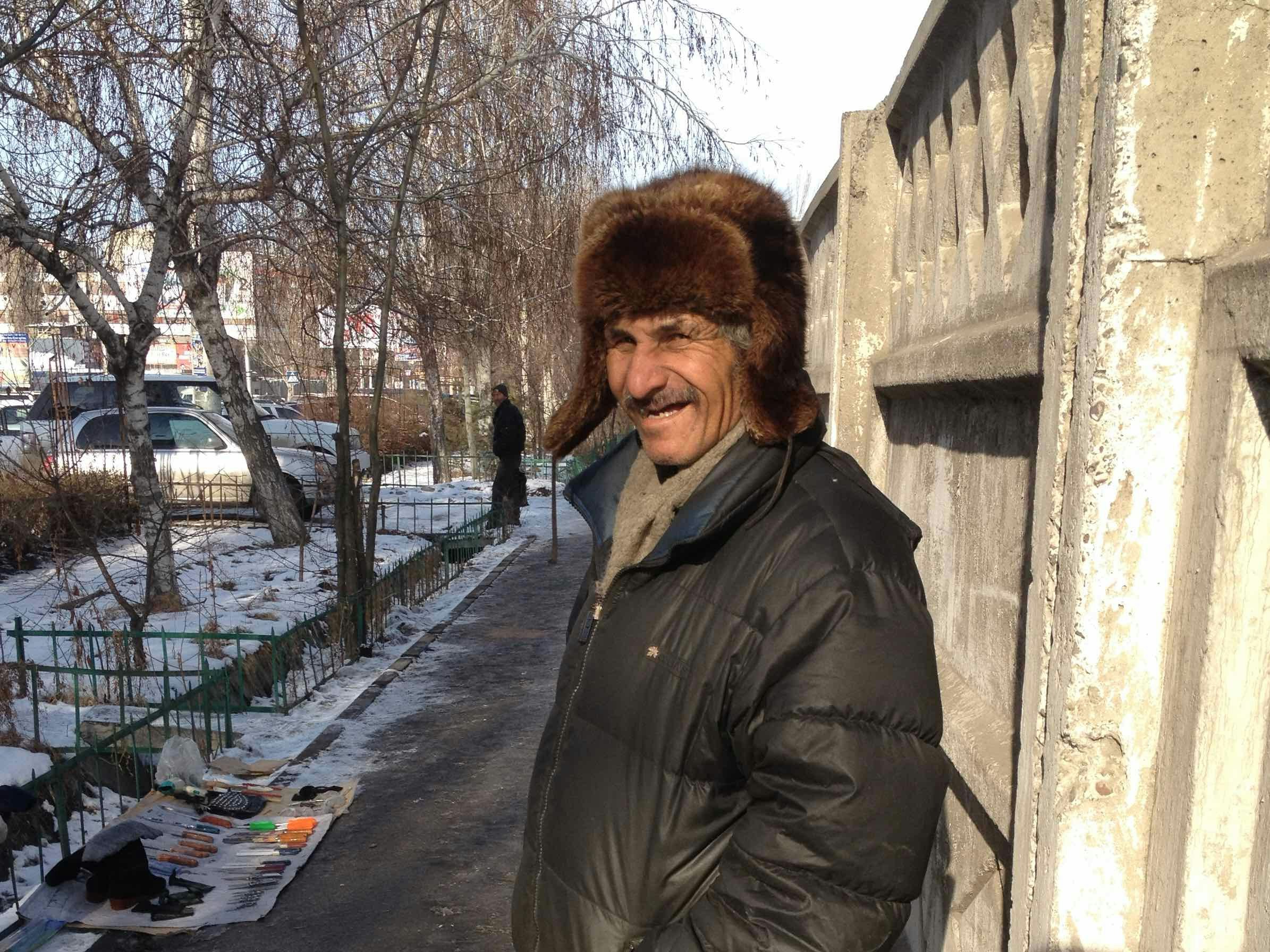
The most hardy small trader that I came across was this elderly lady selling sweets and small household consumables in the deep snow from under an umbrella.
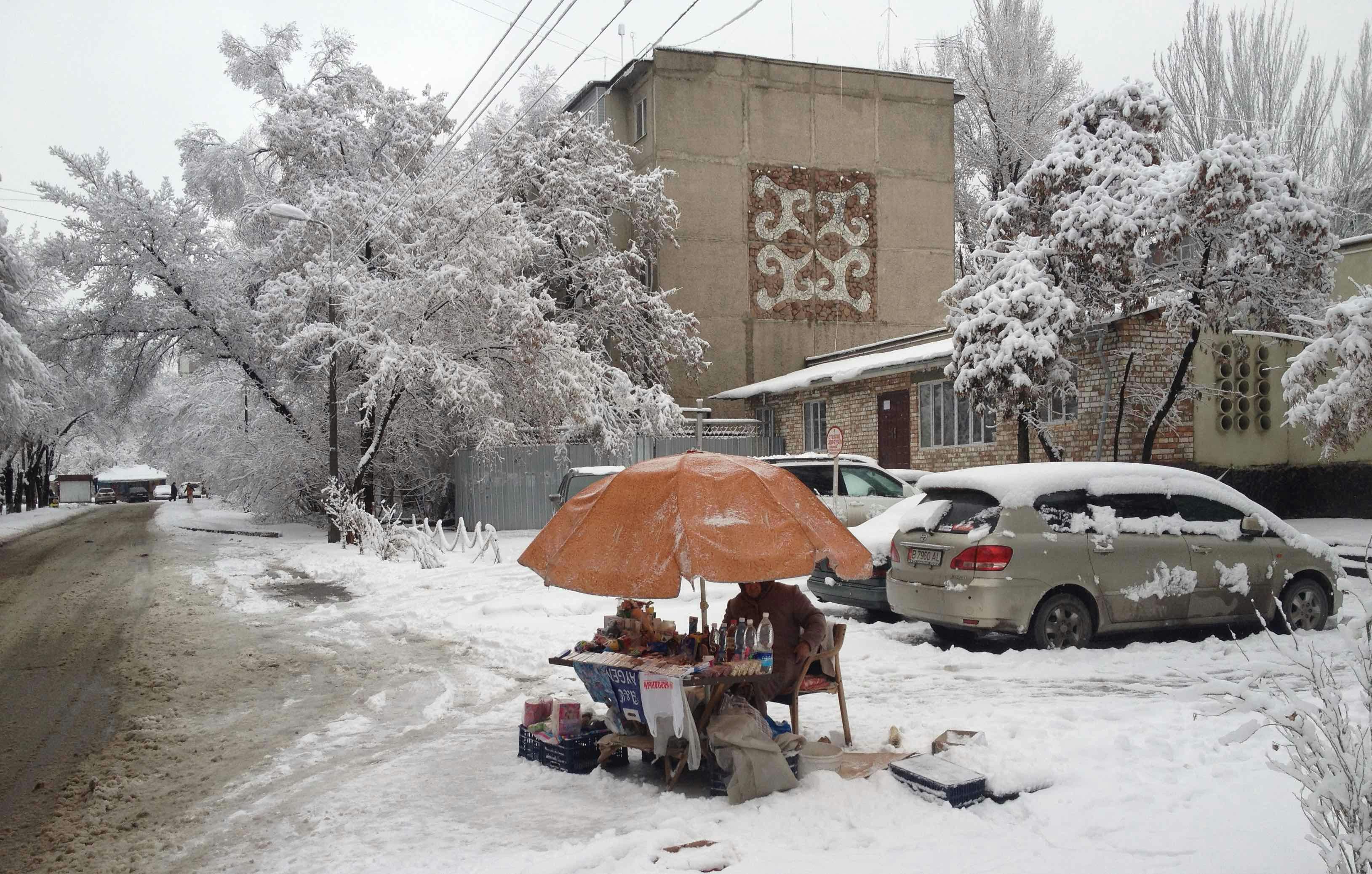
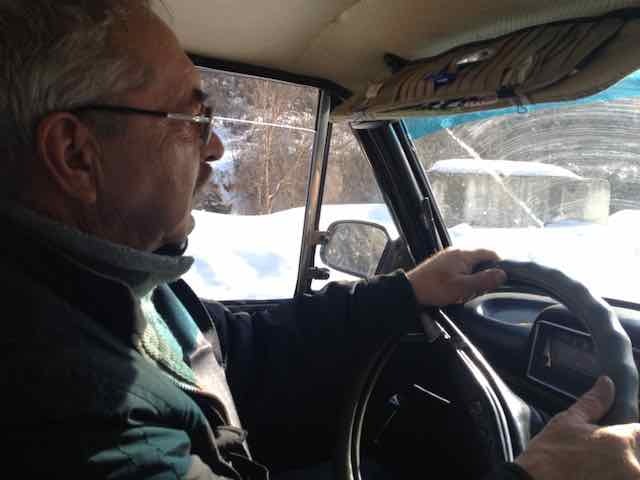
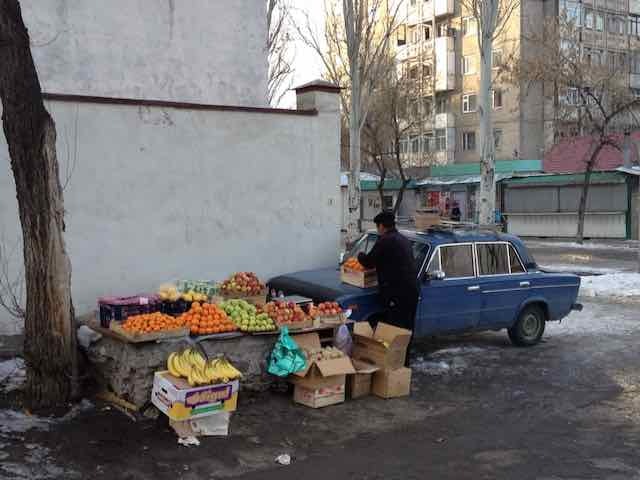
The Lady Economy - the backbone of the Kyrgyz sole trader

to be
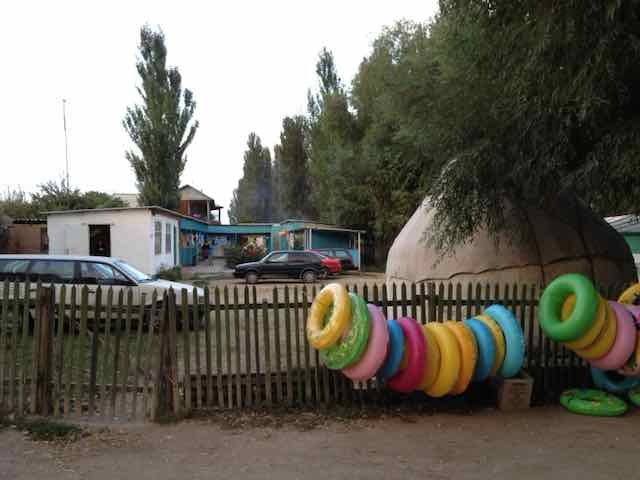
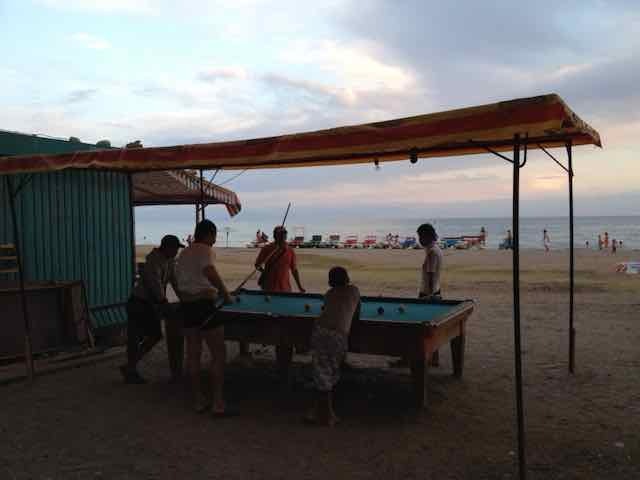
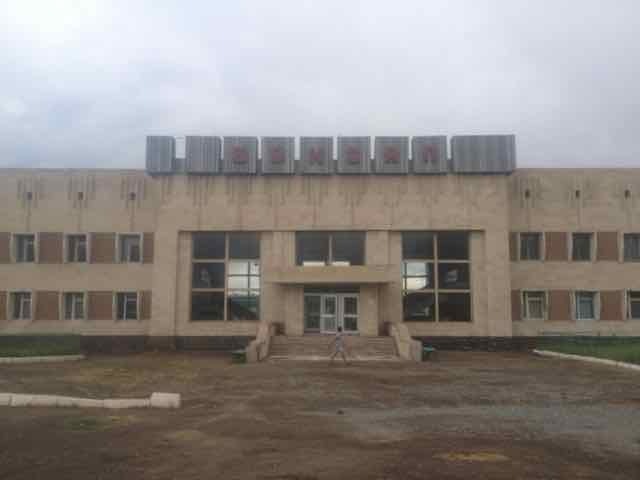
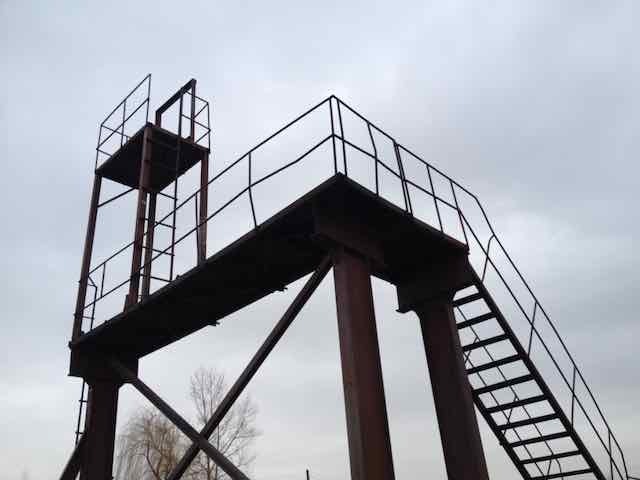
continued...
